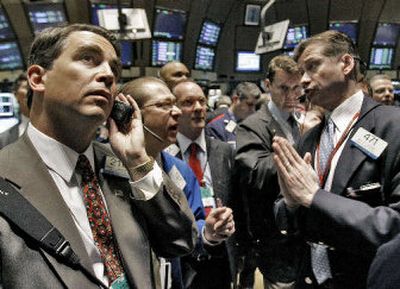Out of lockstep

For the first time in years, foreign stocks are behaving less like they are joined at the hip with U.S. shares — good news for globally minded investors worried that U.S. economic growth may be slowing.
Investors are increasingly preoccupied with the relationship between U.S. and foreign markets, particularly last Thursday, when a 4.5 percent drop in the Shanghai Composite Index led to declines across Asia. U.S. markets finished flat or slightly lower.
Correlation — the tendency of two markets to move in tandem — is decreasing between U.S. and foreign markets partly because economic and earnings growth are diverging.
For years, “as the U.S. market went, so went everything else,” says Steven Auth of Federated Investors in Pittsburgh. The fact that markets are moving less in sync can be good news for global investors: It has the potential to smooth out the ups and downs of their overall returns. Textbook theory suggests that investing abroad helps to diversify a portfolio because overseas stocks are influenced, at least in part, by local economic conditions and interest rates. Therefore, they shouldn’t necessarily move the same way as U.S. stocks.
Correlation is measured on a scale of 1 to minus 1. When markets are moving in perfect unison, they have a correlation of “1” and when they move in exact opposite directions, it is “minus 1.” (At “0” there is no relationship.)
During the two-year period that ended in February, correlation between U.S. and other developed markets was 0.63, according to ING Asset Management. That is a big decline from 2003 to 2005, when they practically moved in lockstep, at 0.93. (The figures are based on monthly movements in the Standard & Poor’s 500-stock index and the Morgan Stanley Capital International EAFE indexes.)
So far this year U.S. markets have held up well. But foreign markets are doing even better. The Dow Jones World Index, excluding the U.S., is up 8.5 percent this year in dollar terms, compared with 3.9 percent for the S&P 500.
The problem is that many analysts see economic and corporate-profit growth slowing in the U.S., while still expanding in much of Europe, Japan and the developing world. The U.S. economy has expanded about 2 percent over the past year. In Europe and Japan, economies are expanding at a 2.5 percent clip, according to Morgan Stanley. Growth in much of the developing world is poised to continue expanding at a faster pace than in the U.S.
Auth sees returns on foreign stocks leaving American stocks behind. He says stock prices outside the U.S. look cheaper relative to earnings, and he believes the dollar will continue to weaken, making returns on foreign stocks higher when translated into dollars.
The higher correlations earlier this decade reflected the bursting of the technology-stock bubble, because it dragged down most developed markets, says Leila Heckman of Heckman Global Advisors, a unit of Bear Stearns Asset Management.
In recent years, she says, the U.S. market tended to be less correlated with Japan, Australia, New Zealand and Singapore than it did with European shares.
At the moment, however, Ms. Heckman favors European stocks because she believes they will outperform their U.S. counterparts during the near term thanks to cheaper valuations.
She notes that high correlation between markets doesn’t mean they will demonstrate identical returns, just that they are prone to move in the same direction.
“Correlations have been all over the place historically,” Heckman says. “As long as they’re not ‘1,’ and you’re investing in different sectors as well as different countries, you can still have some benefits from diversification.”